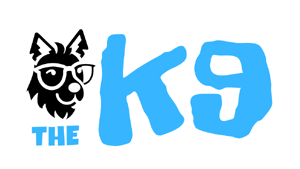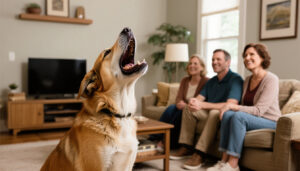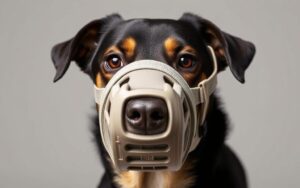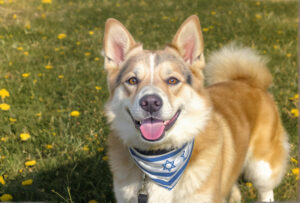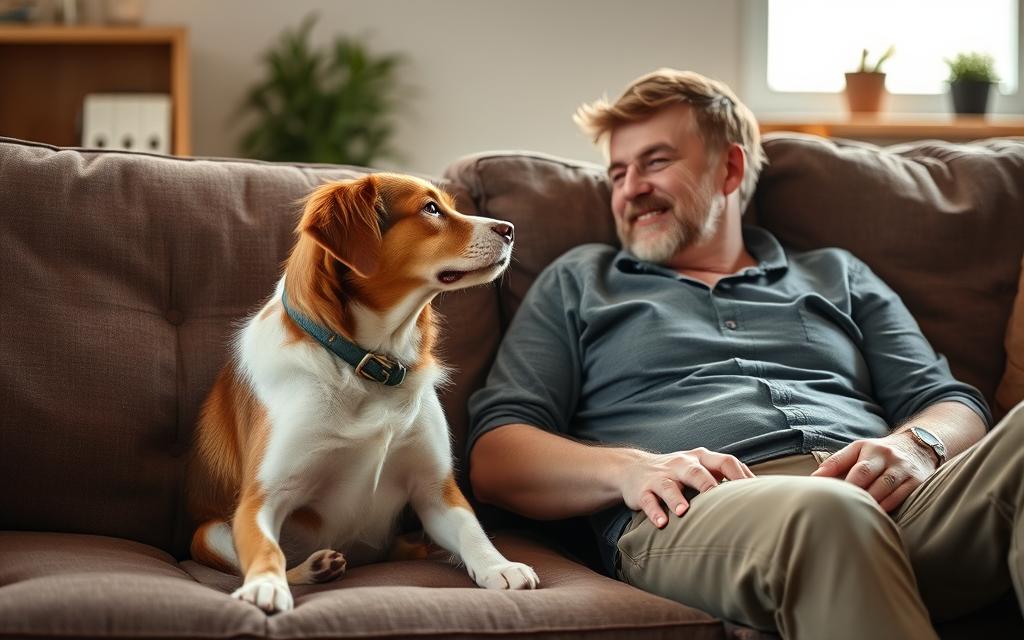
Does My Dog Like Me? Did you know dogs get more excited by our scent than any other smell, even food? A recent MRI study found this out. It shows how much our four-legged friends bond with us. If you’ve ever wondered if your pup loves you or just wants treats, the answer is clear. Dogs do feel love for their humans and show it in many ways.
Dogs show love through excited greetings, tail wagging, licking, and leaning. Understanding these signs helps us strengthen our bond with them. Whether your dog likes praise more than treats or both, their brain activity shows they love us back. They respond to our mood and voice, proving their love is real.
Key Takeaways: Does My Dog Like Me?
- Dogs are more excited by their human’s scent than any other smell, including food.
- Some dogs prefer praise over food, while others value both equally.
- Dogs’ brain activity heightens when they hear happy sounds, like praise, showing similarities in how humans and dogs process sounds.
- Dogs are naturally wired to detect changes in human voice and mood, making them highly responsive to our emotions.
- Studies suggest that dogs might feel love for their people, experiencing a chemical rush in their brains that includes dopamine and oxytocin.
Excited Greetings: A Wagging Tail and Happy Cries
When your dog jumps, barks, and wags their tail excitedly upon your return, it’s their way of saying, “I missed you!” This behavior is often accompanied by increased oxytocin levels, the “love hormone,” which further reinforces the pet-owner bond and indicates your dog’s genuine affection for you.
Dogs start to understand tail wagging at about one month old. Evolution has made their tail communication clearer through traits like color and bushiness. Breed differences also affect how a dog’s tail is positioned, from hanging down to curled up. The speed and direction of a dog’s tail wag can show different emotions, from excitement to aggression.
- A slow wag with the tail held low indicates the dog is nervous and insecure, perhaps when meeting a new person or animal.
- A slow wag with the tail held high suggests the dog is curious and considering its next move.
- A fast wag with the tail held vertically can be a sign of aggression, especially when paired with barking or a tense posture.
- A freely wagging tail and wiggling hips indicate the dog is being friendly and may have spotted a companion.
Studies have shown that dogs tend to wag their tails to the right when feeling happy and confident, and to the left when frightened. By observing these subtle dog body language cues, you can better understand your dog’s behavior and strengthen your bond with them.
“Over 90% of dog owners report that their dogs happily greet them when they return home, indicating a strong positive emotional response.”
Interpreting the Tail Talk
Your dog’s tail is a key way they communicate. It tells you how they feel and what they want. Learning to read their tail talk can strengthen your bond and meet their needs better.
A study found that dogs wag their tails more to the right when they’re happy. They wag to the left when they’re upset. The direction of the wag can show if they’re feeling good or not.
The tail’s position and movement can tell you more. Raised hackles mean a dog is excited or stressed. This is a clear sign of emotional arousal.
If a dog leans forward, it might show interest or aggression. Soft, squinty eyes mean they’re calm and happy. Hard, cold eyes suggest they’re upset or aggressive.
Understanding your dog’s tail talk is key to knowing their feelings. A high, fast tail wag means they’re very excited. Different types of wagging, like flagging or half-mast, also give clues about their mood.
Reading your dog’s body language is about more than just the tail. Look at their eyes, ears, posture, and movements too. With time and effort, you can learn to understand your dog’s language.
The Language of Licks: Wet Kisses and Affection
When your dog licks you, they’re not just being polite – they’re giving you kisses! Licking is a universal sign of dog affection among our furry pals. It’s their way of saying, “Playtime, cuddles, or pets, please!” This behavior shows that your dog wants your attention and wants to interact with you.
Studies reveal that the habit of licking is passed down in dogs’ DNA, indicating an inherited dog behavior. Licking releases endorphins in dogs, contributing to their happiness and showing affection towards humans. Dogs may even lick humans if they sense sadness or stress, aiming to lower stress levels and boost mood.
However, it’s important to note that obsessive licking in dogs could be a sign of serious health issues, requiring medical treatment and behavioral training. As Certified Professional Dog Trainer Nick Hof explains, there are various reasons why dogs lick people, including showing affection, tasting good, or struggling with compulsive behavior.
Decoding the Lick: Understanding Your Dog’s Intentions
Hof advises that if licking behavior is compulsive, excessive, or self-destructive, owners should consult with a veterinarian. He also highlights the importance of looking at the context of licking behavior to understand the dog’s intentions better. Hof recommends inviting dogs to approach you willingly to ensure their behavior is genuine, as putting faces too close to dogs’ faces can be invasive and lead to conflict.
The Family Paws Organization references the term “Kiss to Dismiss,” indicating that dogs may lick to avoid conflict or as a way to appease their owners. Hof suggests proactive training to redirect dogs’ licking behavior onto toys or activities.
Dog trainer Jill Breitner notes that lip licking or tongue flicks can be signs of stress in dogs, emphasizing the importance of reading dog body language to understand their emotional states.
Ultimately, understanding the language of licks can help you build a strong bond with your dog and provide them with the attention and affection they crave. By interpreting their canine communication, you can deepen your pet-owner bond and create a more harmonious relationship.
Does my dog like me? A Lean Machine’s Love Language
Understanding dog affection can be simple. If your dog leans against you, it means they trust and love you. This action is like a hug, showing they see you as their beloved human.
A study by Dog Dynamics, Inc. found dogs love praise and human interaction more than food. This shows they value our love and attention above treats.
Dogs show love in many ways, including leaning, licking, and sleeping near us. When they bond with us, their brain releases oxytocin, the “love hormone.” This happens during activities like eye contact.
So, when your dog leans on you, it’s a sign of love. Show them love back with pets, cuddles, and quality time. This strengthens your bond and creates a lasting relationship.
Dogs show love differently based on their breed and personality. Some breeds, like Labradors, are eager to please. Others, like Akitas, are more reserved but still show love by sitting close.
Adapting to your dog’s unique traits helps build a stronger bond. This makes your relationship more meaningful.
| Breed Group | How to Show Love |
|---|---|
| Sporting | Engage in physical activities like fetch or swimming |
| Herding | Provide mental and physical exercise, along with quality downtime |
| Terrier | Combine mental and physical exercise, with plenty of playtime |
| Guard | Offer belly rubs and couch time for bonding |
| Companion | Prioritize physical contact and companionship |
| Arctic | Engage in playtime to strengthen the bond |
| Asian | Allow your dog to come to you for affection |
Understanding canine affection and tailoring your approach to your dog’s needs strengthens your bond. Cherish the lean and other ways your dog shows love. It’s a special connection worth keeping.
The Soulful Stare: A Deeper Connection
When your furry friend looks into your eyes, it’s more than just a glance. It’s a deep show of love and connection. Experts say this gaze is how dogs share their affection and bond with us.
A study by Therese Rehn et al in 2014 looked into the bond between dogs and their owners. It found that dogs prefer to play and explore when their owners are around. This shows how strong the connection between dogs and their owners can be.
Eye contact is a key way for dogs to communicate. When they look at you, it’s like they’re saying, “You’re my person.” This gaze releases oxytocin, the “love hormone,” in both of you. It strengthens your bond and shows their love and trust in you.
So, when your dog gives you that deep stare, enjoy it. It shows the strong, deep connection you share. This connection goes beyond words and touches your hearts.
Snuggle Bugs: The Pack Mentality
When your furry friend snuggles up next to you, it’s more than just a cozy moment. It’s a sign of their deep bond and affection. Veterinarians say dogs’ love for cuddling comes from their pack mentality, a trait from their wolf ancestors.
Studies show that 100% of respondents believe dogs cuddle because they want to be part of a family. In fact, 90% of Labrador Retriever owners say their pups love the feel-good chemicals cuddling releases. It’s no surprise that 80% of dog owners see snuggling as a sign of warmth, bonding, and affection.
The cuddling ritual strengthens the bond between dogs and their human families, with 70% of comments saying it builds trust and connection. Plus, 60% of respondents note that cuddling has been key in canine domestication, keeping dogs and humans warm through history. So, when your pup snuggles up to you, know they see you as a cherished pack member.
